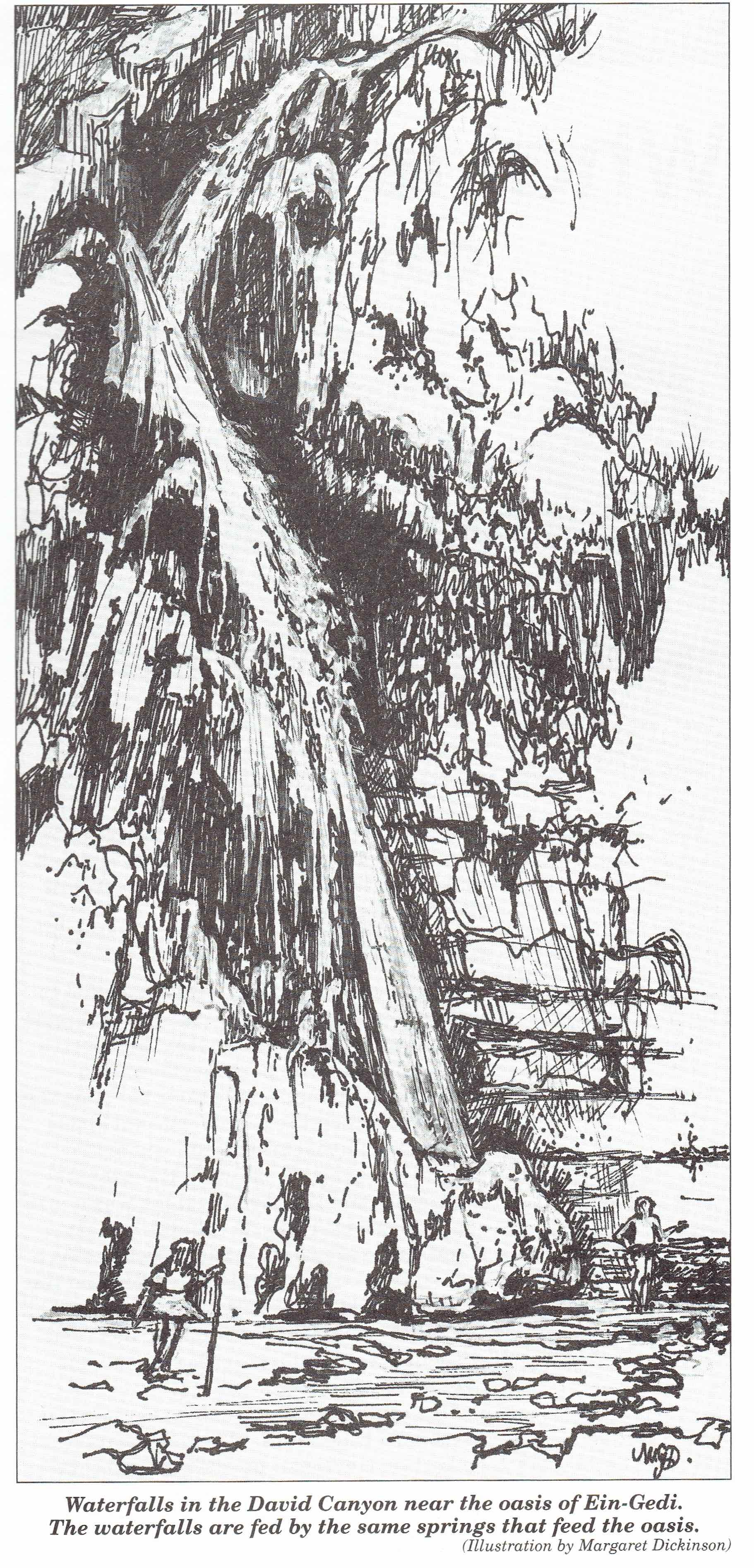
Interior of the Byzantine period synagogue at Ein Gedi near the Dead Sea. Image courtesy of Wikimedia Commons.
As most readers of JP are aware, biblical scrolls from the first century B.C.E. were among the Dead Sea Scrolls discovered in the caves at Qumran.[3] One of the most spectacular of these finds was the Isaiah Scroll (1QIsaa), which contains nearly the entire text of Isaiah. If the BBC is correct that the scroll from the Ein Gedi synagogue is the “earliest text ever found of the Old Testament,” then this newly deciphered scroll would have to be older than the biblical scrolls from Qumran.
 Baffled by the BBC’s report, I wrote to Professor Emanuel Tov of the Hebrew University in Jerusalem, who kindly assured me in a brief e-mail that the scroll from Ein Gedi dates to the Common Era. Professor Tov also directed me to two publications that are freely available to the public, which describe the scroll and the means by which it was deciphered in accurate detail (clicking on the titles will bring you to the articles themselves):
Baffled by the BBC’s report, I wrote to Professor Emanuel Tov of the Hebrew University in Jerusalem, who kindly assured me in a brief e-mail that the scroll from Ein Gedi dates to the Common Era. Professor Tov also directed me to two publications that are freely available to the public, which describe the scroll and the means by which it was deciphered in accurate detail (clicking on the titles will bring you to the articles themselves):
- Michael Segal, Emanuel Tov, William Brent Seales, Clifford Seth Parker, Pnina Shor and Yosef Porath, with an Appendix by Ada Yardeni, “An Early Leviticus Scroll from En-Gedi: Preliminary Publication,” Textus 26 (2016): 1-20.
- William Brent Seales, Clifford Seth Parker, Michael Segal, Emanuel Tov, Pnina Shor and Yosef Porath, “From Damage to Discovery Via Virtual Unwrapping: Reading the Scroll from En-Gedi,” Science Advances 2.9 (2016).
The Israel Antiquities Authority (IAA) has also reported on the scroll from Ein Gedi in an article entitled, “The Most Ancient Hebrew Scroll Since the Dead Sea Scrolls has been Deciphered.”
The above publications explain that the scroll, which was discovered in 1970, was severely burned in the fire that destroyed the synagogue circa 600 C.E. The charred remains of the scroll were so fragile that they could not be unrolled, but a new digital imaging process has allowed experts to “virtually unwrap” the scroll. This digital process has revealed that the scroll contains two columns of the beginning of the book of Leviticus on a single piece of rolled parchment. The first column contains Lev. 1:1-9 and the second column contains Lev. 2:1-11. It is clear that the scroll began with the book of Leviticus, but due to its damaged state it is impossible to determine what more the scroll may have contained beyond the portion that has been preserved. It may have included the entire book of Leviticus, and perhaps other books as well, but it was not a Torah scroll containing the five books of Moses.

Floor mosaic from the Ein Gedi synagogue. Image courtesy of Wikimedia Commons.
In order to determine the age of the Ein Gedi Leviticus scroll scholars applied two methods: Carbon 14 dating and paleographical analysis (i.e., judging the date on the basis of how the letters were written). The Carbon 14 analysis indicates that a third or fourth century C.E. date for the scroll’s composition is the most probable, with a lesser probability of a second century C.E. date. Paleographical analysis, on the other hand, suggests that the scroll was written in the second half of the first century C.E. or possibly in the early part of the second century C.E.
The synagogue in which the scroll was discovered was built in the third to fourth century C.E. and destroyed, as we have mentioned, around 600 C.E. But it is not unreasonable to suppose that the scroll was older than the synagogue in which it was housed.

Charred remains of a scroll discovered in the synagogue at Ein Gedi, which was destroyed ca. 600 C.E. Image courtesy of Wikimedia Commons.
Two attributes of the Ein Gedi Leviticus scroll are unique: First, it is the earliest biblical scroll to have been discovered in the אָרוֹן הֵקּוֹדֶשׁ (‘ārōn haqōdesh, “holy ark”) of an ancient synagogue. Second, the text of this Torah scroll conforms in every respect to the Masoretic text, making this scroll an important witness to the proto-Masoretic text tradition.
The advances in digital imaging technology that allowed for the charred scroll remains to be read without unrolling hold out the promise of revealing the contents of other ancient documents that are too fragile to be unrolled. We eagerly look forward to what other ancient texts this new technology will bring to light.
- [1] See BBC, “Digital Technology Reveals Secret of Ancient Biblical Scroll,” accessed Sept. 22, 2016, 8:51 A.M. E.S.T. The webpage has since been updated with more accurate information. ↩
- [2] An updated version of the BBC report has now added the all important letters “AD” to the description. It also omits the claim that the scroll contains “the earliest text ever found of the Old Testament.” ↩
- [3] See David Pileggi, “The Library at Qumran.” ↩


